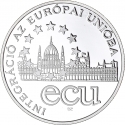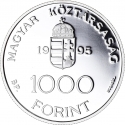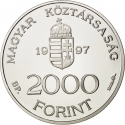You are about to finish your registration. Please check your mailbox (including spam folder). There should be a letter with a confirmation link. Check setting to make sure that your e-mail address is correct.
Send letter againDescription
The Hungarian integration into the European Union or the European community is a significant step towards political, economic, and cultural cohesion for the country. Before Hungary's accession to the EU, European integration was determined as a long-term goal, and accordingly, the country is committed to supporting European values and norms.
The ECU, standing for European Currency Unit, served as a precursor to the euro, the unified currency adopted by numerous European Union member states. Established in 1979, it functioned as a standardized unit of account within the framework of the European Monetary System (EMS). Essentially, the ECU acted as a reference point for exchange rates among European currencies and was primarily used for accounting purposes. Integral to the development of the euro, the ECU provided the foundational structure for the exchange rate mechanism (ERM) within the EMS. With the introduction of physical euro currency in 1999, several countries previously tied to the ECU transitioned to adopting the euro as their official currency.
ECU played a pivotal role in advancing European monetary integration, paving the way for the eventual establishment of the euro as a common currency across much of the European Union.
Engraver: György Bognár
Obverse

|
The coin features an image of the Széchenyi Chain Bridge connecting Hungary to the European Community, depicted in a map-like style. In the upper portion, intersecting lines representing longitude and latitude are visible. In the middle, there's a borderless map-like depiction of the European Community countries. Below, curved inscriptions are written in lowercase letters. Twelve stars, symbolizing the member states of the European Community, are evenly spaced in a circle. Above, the text "Integration to the European Union" is curved. INTEGRÁCIÓ AZ EURÓPAI KÖZÖSSÉGBE |
|---|---|
Reverse

|
Depicts slightly above the center the coat of arms of the Republic of Hungary, below which is the denomination, followed by the curved inscription "FORINT" beneath it. The issuance year is divided and visible on the left and right sides of the coat of arms. Positioned along the edges of the coin, the mintmark is on the left side, while the designer's surname is placed on the right side. MAGYAR KÖZTÁRSASÁG |
| Edge |
500 Forint
Third Republic
Integration into the European Union
Széchenyi Chain Bridge
Subscribe series
KM# 704 Schön# 208 Adamo# EM130
Integration into the European Union
Széchenyi Chain Bridge
Related coins
Integration into the European Union


_II._1994_30.03.2024_19.59-125.jpg)
_II._1994_30.03.2024_19.59_01-125.jpg)



